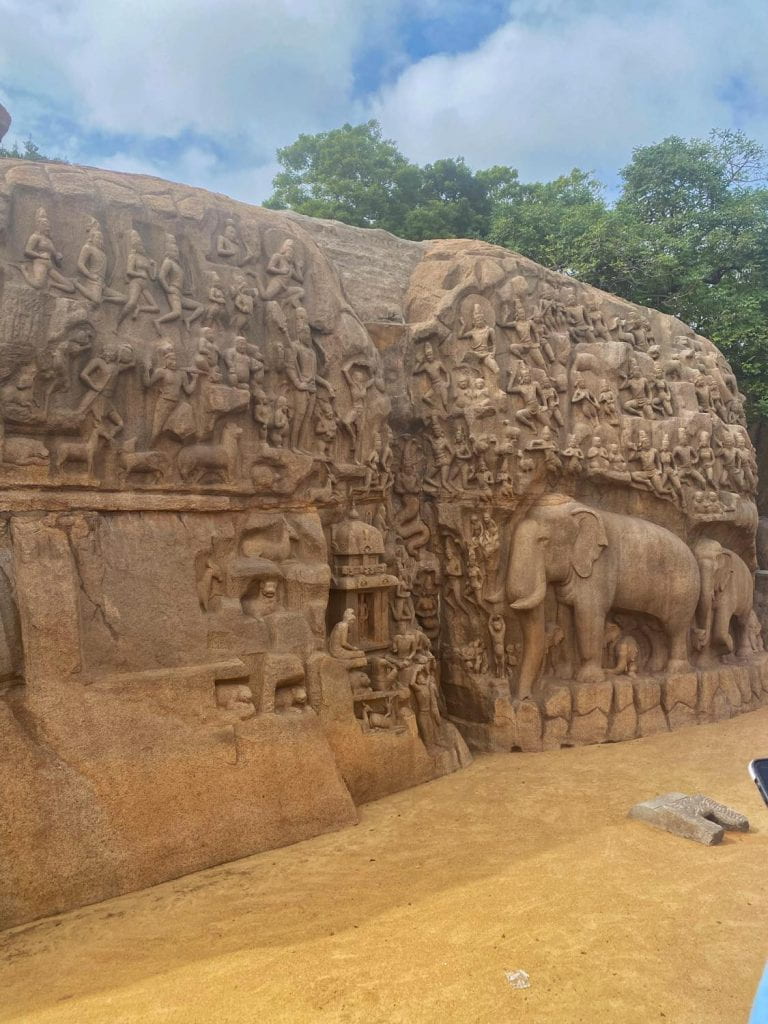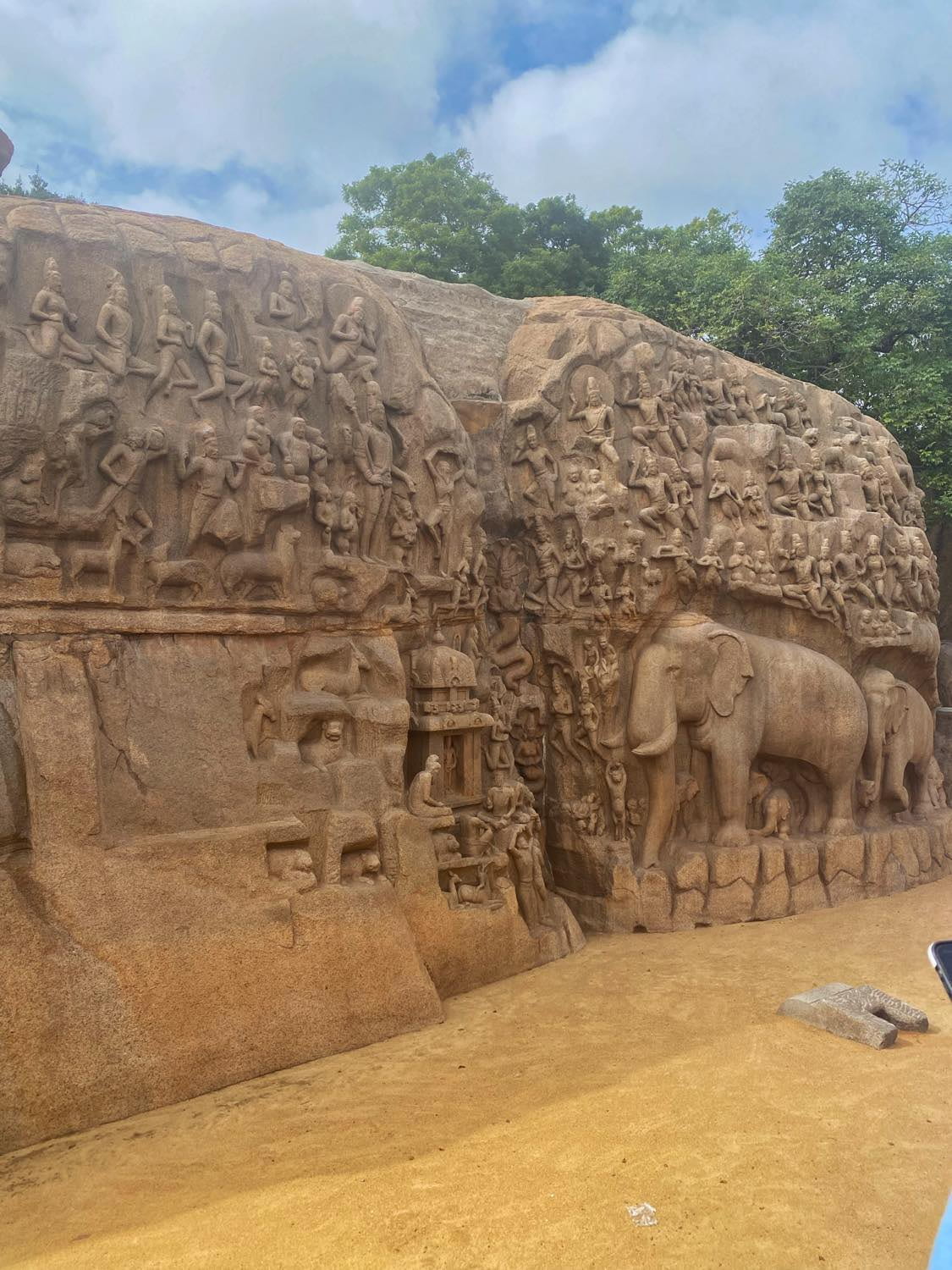Near the end of 2023 semester two, I found myself making the spontaneous decision to apply to the Reimagining India PMSA. On my first day in India at the beginning of January 2024, I was marvelling at the UNESCO heritage site, the Descent of the Ganges in Mahabalipuram. Now, I find myself in awe of the real landscape that is the Ganges River at the foot of the Himalayas in Rishikesh. In one week I will return home to New Zealand. We have truly come ‘full circle’.
The Descent of the Ganges is a large rock carved depiction of the story behind the Ganges River. The brilliant carving created in the 7th century shows how the Ganges emerged from the head of the God Shiva after a battle with Arjuna (a warrior in the Mahabharata War). The Descent of the Ganges is a fantastic tale in Indian spirituality and the heritage site is a world class piece of artistry.

I remembered back to that rock carving I saw upon arriving in India as I found myself arms deep in the Ganges digging for riverbed rocks. The various colours of the orange, purple, dark, light and sparkly rocks mesmerised me. Simultaneously, I hoped there were no creatures living beneath the rocks waiting to surprise me! As a Geography student, the Ganges River is a rich site of study. Many group members dipped themselves in the water three times to receive the blessings of Mother Ganga. In Rishikesh, the centrality of the river is evident in everyday life. Walking along the riverbank, you will see many people blessing themselves or bathing in the river. You will see merchants selling fish food to feed the large carp who are excited for a taste of the delicious chapati dough. Hearing the rush of the mighty Ganges River was a blessing in itself. You will see the fast flow of cool water coming down from the Himalayas, formed over the course of tens of millions of years as a result of powerful plate tectonics. Nick from the Indogenius team joked to me that New Zealand’s South Island landscape has some tough competition. India and New Zealand can share a strong bond over the glorious gifts from God/Mother Earth/Papatuanuku that grace our natural landscapes.
Coming ‘full circle’ on this six week study tour of India has been the most wonderful experience of my life, and also an important symbolic moment while being immersed in Indian culture. The circle symbol is prolific across India. From beautiful bindis worn to represent the sixth chakra (of concealed wisdom), to the circular movements in Bollywood dance, to mandala symbolising oneness, to the Ashoka chakra in the centre of the Indian flag which reminds us to keep moving and progressing. Throughout the six weeks of this journey, I have discovered new wisdom, I have twirled my heart away in Bollywood dance, our cohort has become more united, India and New Zealand have become closer, and we have certainly kept a steady pace to experience as much of India as possible. While the 2024 PMSA cohort has come ‘full circle’, the story has not come to a close. I look forward to bringing stories of India home to New Zealand, keeping in touch with the wonderful people I have met along the way, and seeing the India-New Zealand relationship progress.



